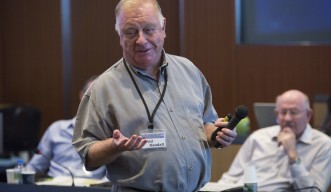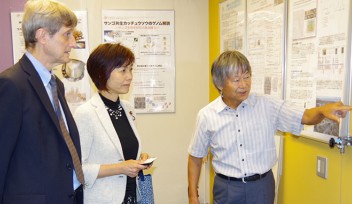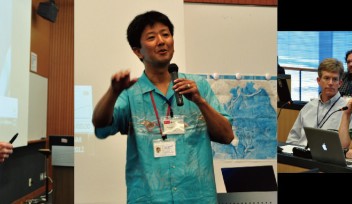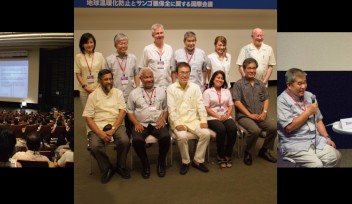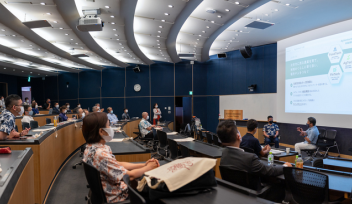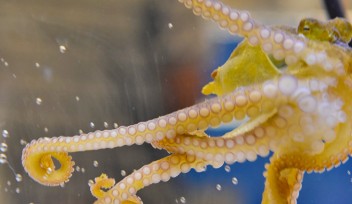OIST Explores Opportunities in Marine Sciences
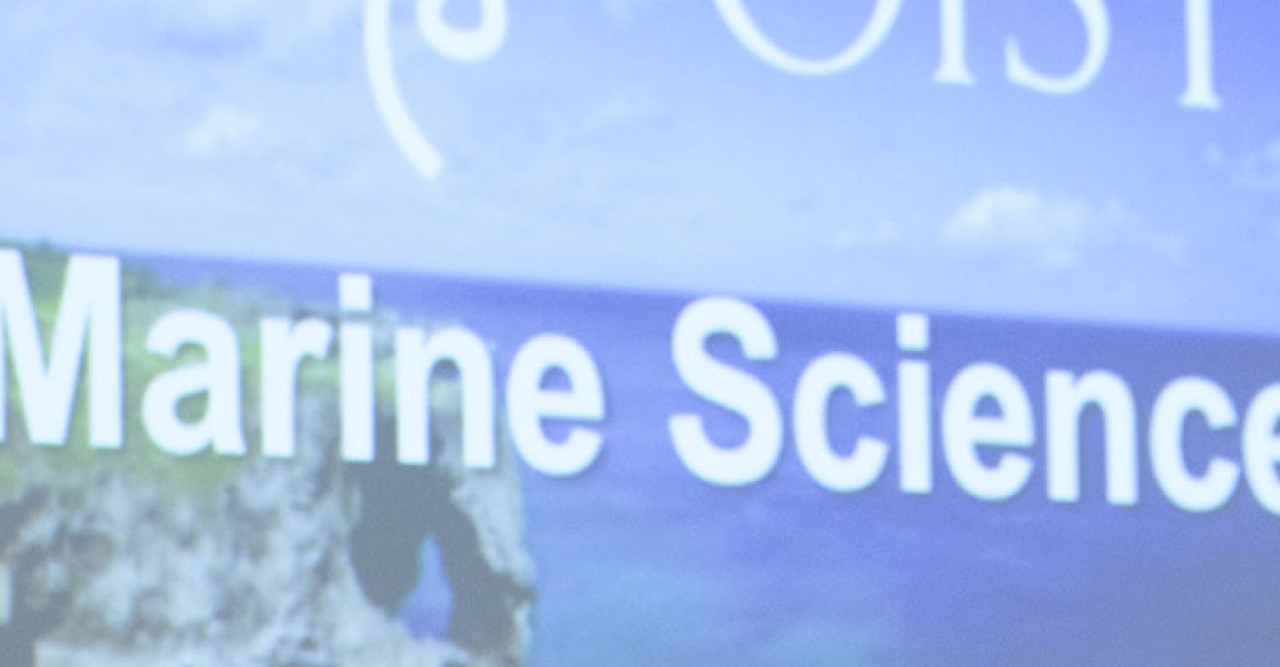
On October 29, six eminent marine scientists from institutions around the world gathered at the Okinawa Institute of Science and Technology Graduate University to discuss their work, ranging from the microscopic world of cellular marine biology, to the dynamics of current movements spanning entire oceans and coastlines. The discussion not only displayed their expertise in their particular fields, but also allowed them to share their experience working in the field of marine science. George Iwama, Provost of OIST explains, “We invited them to OIST to talk about their views about the future of Marine Science… so they could inform each other and OIST about some of the opportunities and challenges we all face today, and those we will face in the future.”
The talks began with a presentation by Provost Iwama, regarding the future plans OIST has for the construction and development of the Marine Science Laboratory in Onna Village. The proposed layout of the new facilities as well as a timeline for the project were highlighted in his talk. Provost Iwama also pointed out the unique biodiversity of the Okinawa area. The close proximity of OIST to deep sea troughs and the Kuroshio Current make it an ideal location for such facilities.
The presentations by the experts covered a range of topics including Long Term Ecological Research (LTER), the history of marine science laboratories and costal marine research and its relationship to industry. Professor Dave Siegel from the University of California Santa Barbara raised questions such as what OIST might be missing before it can conduct LTER of its own.
Along with directed advice and questions for those at OIST to consider, there was also much discussion about the history of marine science laboratories and the lessons to be learned. Professor David Randall from the University of British Columbia, Canada spoke about the foundations of marine science in the setting of seaside laboratories, in particular the Stazione Zoologica, which was founded in 1872 in Naples, Italy. He emphasized that the unique way it was structured and governed allowed for some of the first true examples of international collaborations in marine science.
While all of the speakers and professors came from different backgrounds and locations, this central theme of collaboration among the disciplines was a common thread among them. As Professor Stephen Monismith of Stanford University in California pointed out “The long established ocean research institutions can be very insular places.”
Each professor also took some time to speak their opinions of the direction that marine science is taking now and in the near future and what bearing this could have on OIST’s future efforts. All of the professors agreed on the need to change how marine science as a whole is conducted, and praised the interdisciplinary approach to science that OIST has taken. There was also a strong measure of enthusiasm about how OIST’s academic and research strategies can contribute to science and shape the future of how research collaboration is done. OIST President Johnathan Dorfan said, “It was a pleasure to attend this seminar. Not only did it bring some of the worlds most respected contributors to Marine Science to OIST, but also it gave us the opportunity to clarify our ambitions and direction in this very important discipline.”
By Sean To
Specialty
For press enquiries:
Press Inquiry Form











